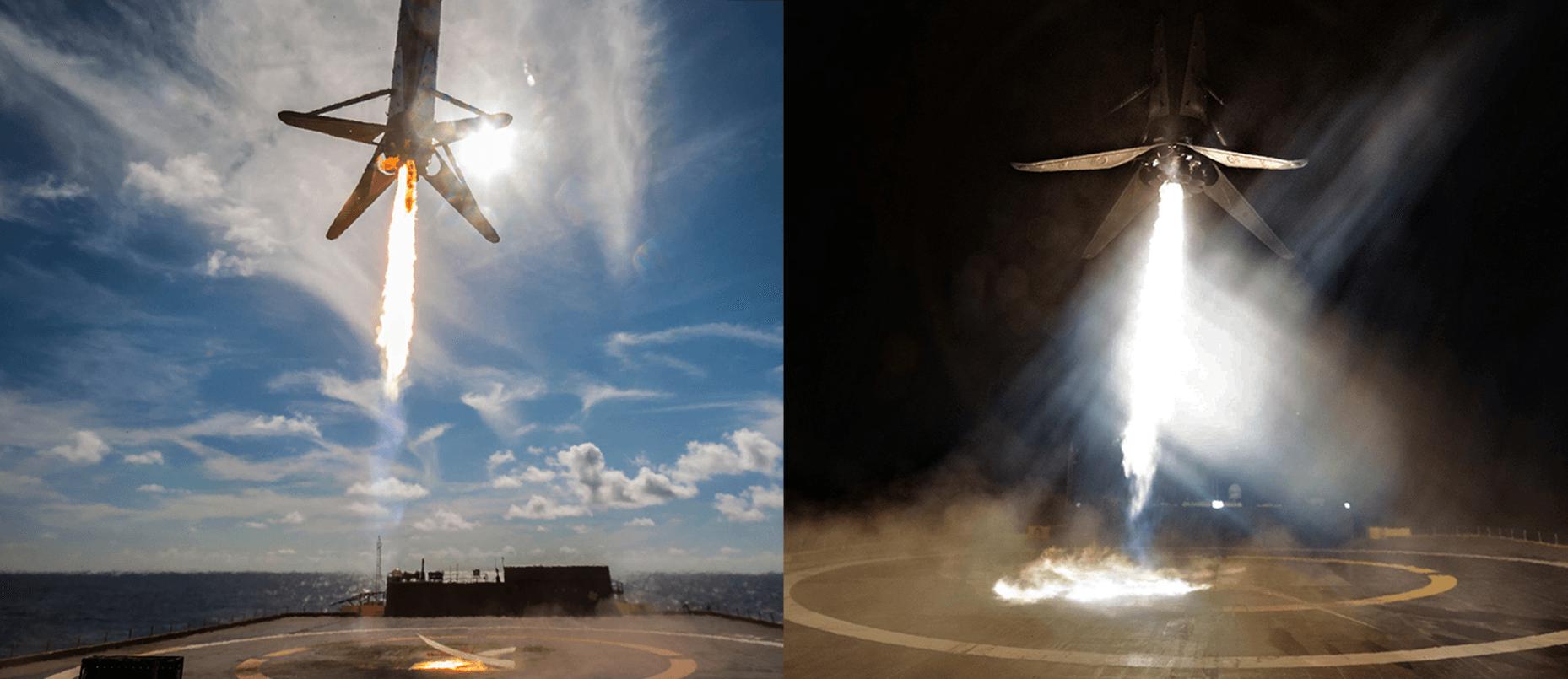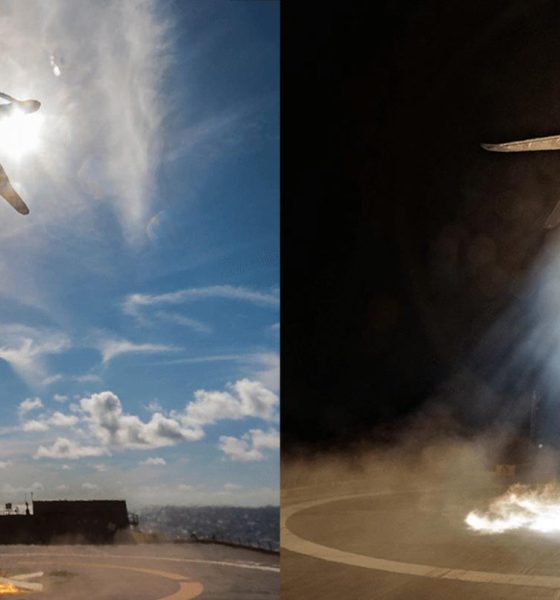

News
SpaceX Falcon 9 booster could be first to launch from all 3 company pads
A week after its original launch target, SpaceX launch engineers and technicians appear to have completed an additional suite of preflight checks that triggered an unusually long delay from November 19 to November 28.
As a sort of happy accident, the mission – a Spaceflight Industries rideshare carrying ~64 satellites – will not only be the first time SpaceX has launched a given Falcon 9 booster three times, but it will also become the first time SpaceX has launched the same Falcon 9 booster from all three of the company’s orbital launch facilities.
Standing down from Monday’s launch attempt of Spaceflight SSO-A: SmallSat Express to conduct additional pre-flight inspections. Once complete, we will confirm a new launch date.
— SpaceX (@SpaceX) November 17, 2018
Likely a matter of caution over expediency, that extra time was used to make sure that the mission’s twice-flown Falcon 9 B1046 booster is as ready as possible for its third launch, a subtle but absolutely critical milestone for Falcon 9 reusability. More importantly, from an operational standpoint, this is something that the company has simply never attempted, meaning that while it’s similar in concept to the numerous booster reuses SpaceX engineers and technicians have already pulled off, every aspect of B1046’s refurbishment and preparation for another launch is new territory for all.
In this sense, even the most minor observations and procedural developments are likely being documented with extreme care, paving the way for the systematic refurbishment of Block 5 boosters with 2+ launches on their manifest. Similar to how car mechanics know to look at and for dramatically different things depending on the age of the car and the time since its last maintenance, reusable rockets are likely to require an even more exotic and unintuitive approach to multi-flight maintenance and repair diagnostics. As such, it should come as little surprise that SpaceX chose to delay SSO-A a few days to ensure that the rocket is ready to safely place its payload in orbit.
Vandenberg Air Force Base SLC-4 looked great yesterday, Nov. 26, from the orbit of #DEIMOS2! Good luck @SpaceX for tomorrow's launch! 🚀 #KazSTSAT #Falcon9 pic.twitter.com/q2NmKv3k0c
— Deimos Imaging (@deimosimaging) November 27, 2018
Pecking orders
Aside from the extreme importance of its third launch, Falcon 9 B1046 will be subject to another rather unique situation. Barely a mile or two northeast of SpaceX’s SLC-4 launch complex, a ULA Delta IV Heavy rocket is assembled and nearly ready to place the National Reconnaissance Office’s classified NROL-71 satellite into a high-energy Earth orbit. If the extraordinarily expensive launch vehicle (~$350-400M) it sits atop of is any sign, NROL-71 is a massive satellite that cost the NRO anywhere from $500M to $2B to design, procure, and prepare for launch.
In other words, the sheer capital at risk has likely resulted in a bit of manifest and range jockeying between Falcon 9/SpaceX and Delta Heavy/ULA/NRO. Under normal circumstances, Falcon 9 B1046 could without a doubt perform a Return-To-Launch-Site (RTLS) recovery, sending the booster all the back to SLC-4 for a landing at LZ-4.
https://www.instagram.com/p/BqoCpFulAAx/
Instead, likely prevented from landing at LZ-4 due to the slight chance that Falcon 9 could impact at or around ULA’s launch pad in an off-nominal situation, SpaceX has decided to station drone ship Just Read The Instructions less than 30 miles (50 km) off the coast of Vandenberg Air Force Base. In this odd and unused landing mode, Falcon 9 will perform a sort of RTLS Lite, returning back in the direction of the launch site but not going far enough to actually reach it.
In doing so, B1046 will – fingers crossed – become the first Falcon 9 booster to land on both SpaceX drone ships and launch from all three of the company’s orbital facilities, LC-40 (Cape Canaveral Air Force Station), LC-39A (Kennedy Space Center), and SLC-4 (Vandenberg Air Force Base).

Elon Musk
Elon Musk’s X will start using a Tesla-like software update strategy
The initiative seems designed to accelerate updates to the social media platform, while maintaining maximum transparency.

Elon Musk’s social media platform X will adopt a Tesla-esque approach to software updates for its algorithm.
The initiative seems designed to accelerate updates to the social media platform, while maintaining maximum transparency.
X’s updates to its updates
As per Musk in a post on X, the social media company will be making a new algorithm to determine what organic and advertising posts are recommended to users. These updates would then be repeated every four weeks.
“We will make the new 𝕏 algorithm, including all code used to determine what organic and advertising posts are recommended to users, open source in 7 days. This will be repeated every 4 weeks, with comprehensive developer notes, to help you understand what changed,” Musk wrote in his post.
The initiative somewhat mirrors Tesla’s over-the-air update model, where vehicle software is regularly refined and pushed to users with detailed release notes. This should allow users to better understand the details of X’s every update and foster a healthy feedback loop for the social media platform.
xAI and X
X, formerly Twitter, has been acquired by Elon Musk’s artificial intelligence startup, xAI last year. Since then, xAI has seen a rapid rise in valuation. Following the company’s the company’s upsized $20 billion Series E funding round, estimates now suggest that xAI is worth tens about $230 to $235 billion. That’s several times larger than Tesla when Elon Musk received his controversial 2018 CEO Performance Award.
As per xAI, the Series E funding round attracted a diverse group of investors, including Valor Equity Partners, Stepstone Group, Fidelity Management & Research Company, Qatar Investment Authority, MGX, and Baron Capital Group, among others. Strategic partners NVIDIA and Cisco Investments also continued support for building the world’s largest GPU clusters.
News
Tesla FSD Supervised wins MotorTrend’s Best Driver Assistance Award
The decision marks a notable reversal for the publication from prior years, with judges citing major real-world improvements that pushed Tesla’s latest FSD software ahead of every competing ADAS system.

Tesla’s Full Self-Driving (Supervised) system has been named the best driver-assistance technology on the market, earning top honors at the 2026 MotorTrend Best Tech Awards.
The decision marks a notable reversal for the publication from prior years, with judges citing major real-world improvements that pushed Tesla’s latest FSD software ahead of every competing ADAS system. And it wasn’t even close.
MotorTrend reverses course
MotorTrend awarded Tesla FSD (Supervised) its 2026 Best Tech Driver Assistance title after extensive testing of the latest v14 software. The publication acknowledged that it had previously criticized earlier versions of FSD for erratic behavior and near-miss incidents, ultimately favoring rivals such as GM’s Super Cruise in earlier evaluations.
According to MotorTrend, the newest iteration of FSD resolved many of those shortcomings. Testers said v14 showed far smoother behavior in complex urban scenarios, including unprotected left turns, traffic circles, emergency vehicles, and dense city streets. While the system still requires constant driver supervision, judges concluded that no other advanced driver-assistance system currently matches its breadth of capability.
Unlike rival systems that rely on combinations of cameras, radar, lidar, and mapped highways, Tesla’s FSD operates using a camera-only approach and is capable of driving on city streets, rural roads, and freeways. MotorTrend stated that pure utility, the ability to handle nearly all road types, ultimately separated FSD from competitors like Ford BlueCruise, GM Super Cruise, and BMW’s Highway Assistant.
High cost and high capability
MotorTrend also addressed FSD’s pricing, which remains significantly higher than rival systems. Tesla currently charges $8,000 for a one-time purchase or $99 per month for a subscription, compared with far lower upfront and subscription costs from other automakers. The publication noted that the premium is justified given FSD’s unmatched scope and continuous software evolution.
Safety remained a central focus of the evaluation. While testers reported collision-free operation over thousands of miles, they noted ongoing concerns around FSD’s configurable driving modes, including options that allow aggressive driving and speeds beyond posted limits. MotorTrend emphasized that, like all Level 2 systems, FSD still depends on a fully attentive human driver at all times.
Despite those caveats, the publication concluded that Tesla’s rapid software progress fundamentally reshaped the competitive landscape. For drivers seeking the most capable hands-on driver-assistance system available today, MotorTrend concluded Tesla FSD (Supervised) now stands alone at the top.
News
Elon Musk’s Grokipedia surges to 5.6M articles, almost 79% of English Wikipedia
The explosive growth marks a major milestone for the AI-powered online encyclopedia, which was launched by Elon Musk’s xAI just months ago.

Elon Musk’s Grokipedia has grown to an impressive 5,615,201 articles as of today, closing in on 79% of the English Wikipedia’s current total of 7,119,376 articles.
The explosive growth marks a major milestone for the AI-powered online encyclopedia, which was launched by Elon Musk’s xAI just months ago. Needless to say, it would only be a matter of time before Grokipedia exceeds English Wikipedia in sheer volume.
Grokipedia’s rapid growth
xAI’s vision for Grokipedia emphasizes neutrality, while Grok’s reasoning capabilities allow for fast drafting and fact-checking. When Elon Musk announced the initiative in late September 2025, he noted that Grokipedia would be an improvement to Wikipedia because it would be designed to avoid bias.
At the time, Musk noted that Grokipedia “is a necessary step towards the xAI goal of understanding the Universe.”
Grokipedia was launched in late October, and while xAI was careful to list it only as Version 0.1 at the time, the online encyclopedia immediately earned praise. Wikipedia co-founder Larry Sanger highlighted the project’s innovative approach, noting how it leverages AI to fill knowledge gaps and enable rapid updates. Netizens also observed how Grokipedia tends to present articles in a more objective manner compared to Wikipedia, which is edited by humans.
Elon Musk’s ambitious plans
With 5,615,201 total articles, Grokipedia has now grown to almost 79% of English Wikipedia’s article base. This is incredibly quick, though Grokipedia remains text-only for now. xAI, for its part, has now updated the online encyclopedia’s iteration to v0.2.
Elon Musk has shared bold ideas for Grokipedia, including sending a record of the entire knowledge base to space as part of xAI’s mission to preserve and expand human understanding. At some point, Musk stated that Grokipedia will be renamed to Encyclopedia Galactica, and it will be sent to the cosmos.
“When Grokipedia is good enough (long way to go), we will change the name to Encyclopedia Galactica. It will be an open source distillation of all knowledge, including audio, images and video. Join xAI to help build the sci-fi version of the Library of Alexandria!” Musk wrote, adding in a later post that “Copies will be etched in stone and sent to the Moon, Mars and beyond. This time, it will not be lost.”








